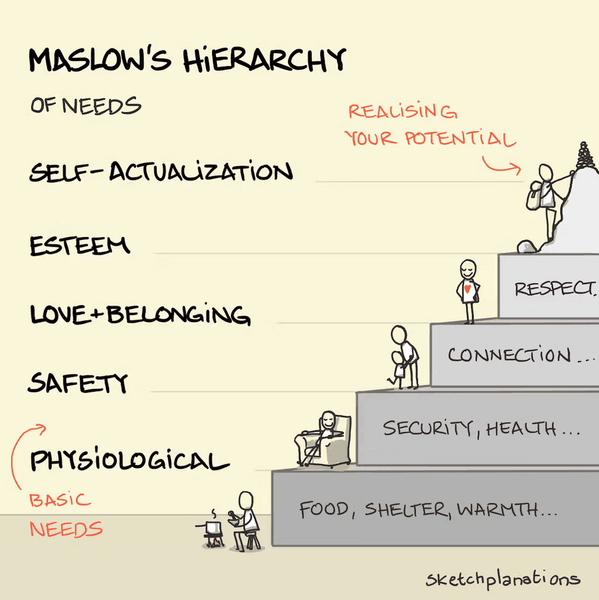Sublime
An inspiration engine for ideas
In a paper entitled ‘A Theory of Human Motivation’ published in Psychological Review in 1943, Maslow arranged our longings and appetites in a pyramid-shaped continuum, ranging from what he called the lower needs, largely focused on the body, to the higher needs, largely focused on the psyche and encompassing such elements as the need for status,
... See moreAlain De Botton • The School of Life: An Emotional Education


According to Abraham Maslow’s hierarchy of needs, a sense of belonging comes third after physiological and safety needs.
Anna LeMind • The Power of Misfits
psychologist Abraham Maslow in 1943.
Josh Kaufman • The Personal MBA: A World-Class Business Education in a Single Volume
In 1943, the psychologist Abraham Maslow published his hugely influential paper “A Theory of Human Motivation,” which famously described people as having a hierarchy of needs. It is often depicted as a pyramid. At the bottom are our basic needs—the essentials of physiological survival (such as food, water, and air) and of safety (such as law,
... See more

